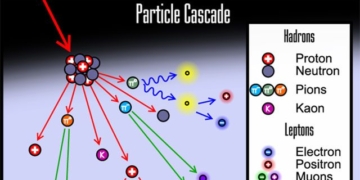Chattanooga, Tennessee, is one of the places with the most advanced power grids in the United States, capable of self-healing and restoring electricity supply within seconds.
The local utility company, EPB of Chattanooga, has invested $280 million to upgrade its electrical system with smart technology. In the first 10 years, the project generated an economic value of $2.7 billion, according to a study funded by EPB. This type of smart grid provides more efficient, safe, and cleaner energy in the future, with lower bills and fewer outages, as reported by Business Insider.

EPB workers installing fiber optic cables on the Tennessee River. (Photo: EPB of Chattanooga).
In most places, energy begins at a massive thermal power plant. There, transmission lines carry electricity to substations to reduce voltage and distribute it to homes and businesses. Due to the effects of climate change, increasingly extreme weather events are destroying electrical infrastructure, leading to power outages that cost American businesses an estimated $150 billion per year, according to the U.S. Department of Energy.
Meanwhile, the coping solutions also exert pressure on the grid. Wind farms and solar panels feed energy into the system intermittently, making it difficult for supply to meet fluctuating daily electricity demand. Renewable energy further complicates the issue. From 12,000 power plants, the U.S. may need electricity from a million scattered sources, such as hydroelectric dams and rooftop solar panels, within a few decades.
To address this issue, the grid needs to be upgraded with smart technology, according to Kevin Schneider, chief engineer of electrical systems research at the Pacific Northwest National Laboratory. A crucial task for any grid is balancing supply and demand. Too much electricity can damage the system, while insufficient electricity will leave many residents without power. Smart grids automatically balance supply and demand through the use of metering systems, sensors, controllers, and computers.
Initially, EPB of Chattanooga needed a means to communicate with all smart devices to implement critical updates to their system, according to David Wade, the CEO of EPB of Chattanooga. This involved using fiber optic cables. The EPB board of directors approved the plan in 2008. With a budget of $169 million, workers began digging trenches and installing fiber optic cables throughout Hamilton County. Initially projected to last 10 years, the project was expedited by a $111.5 million grant from the U.S. Department of Energy, reducing completion time by half. EPB completed its smart grid in 2012.
In just four years, EPB installed a fiber optic network and connected it to over 180 smart meters in homes and businesses. The company also installed approximately 1,200 smart switch devices, which can open or close electrical flows via software or remote operator commands. These devices can quickly reroute power, bypassing damaged lines to prevent outages. This means the system can self-heal and restore power supply within seconds.
As a result, EPB reported a 55% reduction in annual outage minutes, equivalent to 19 million minutes. Previously, operators had to drive to each switch to manually open or close them. In the next decade, EPB plans to invest an additional $115.5 million to expand its smart grid.




















































